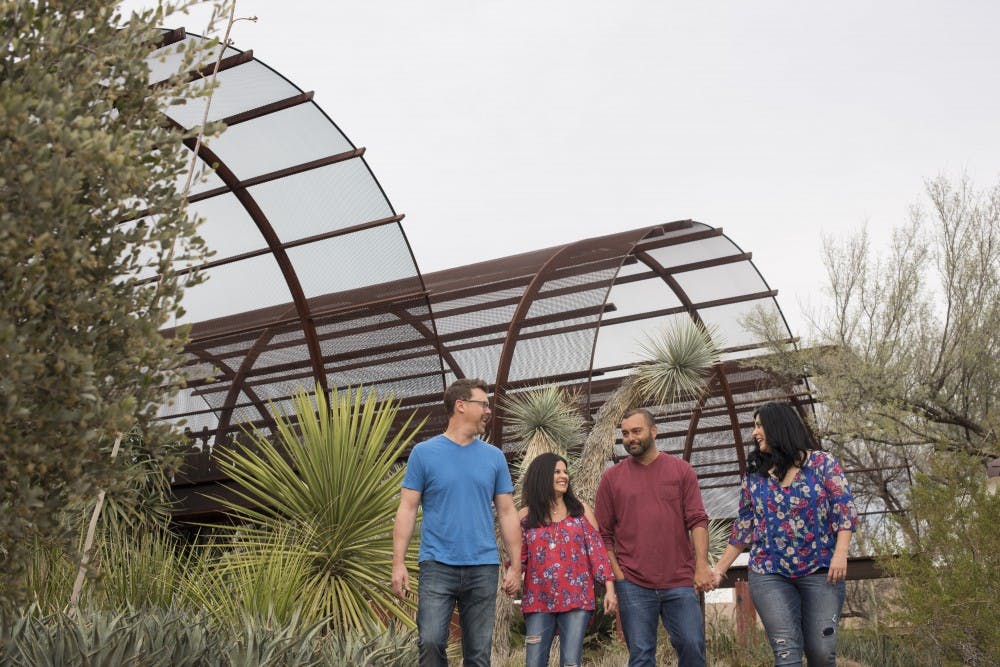The Desert Botanical Garden will be hosting the Source Project as part of its upcoming PLANeT Celebration Festival on Saturday.
The Source Project was created by Phil Weaver-Stoesz as his thesis project for his MFA with ASU's School of Film, Dance and Theatre.
The project was started nine months ago with creative sessions between researchers and artists, Weaver-Stoesz said. The researchers were made up of students from the ASU School of Sustainability and the Desert Botanical Garden.
Weaver-Stoesz said the Source Project will feature a wide variety of events. Activities include dancers, a photo gallery with a chance to take a picture, a performance by the ASU Ukulele Club and even a secret event involving passwords and researchers at the gardens.
"The event is an immersive festival that celebrates human connections,” Weaver-Stoesz said.
People have become disconnected from the world in five major ways, he said.
People are disconnected from both the past and the future — not knowing what has happened or will happen. They are disconnected by distance — things we do in the US, we will never see the effect of that in other places. People are disconnected across society — there is a built and natural society.
"Lastly, we are disconnected from our own agency to make a change in the world," Weaver-Stoesz said. "We recycle a cup, but global warming keeps happening. We don't see a connection between us and the world around us.”
One researcher on the project is Kim McCue Ph.D, assistant director of research, conservation and collections and also program director of conservation of threatened species and habitats.
McCue said that the creative sessions were a wonderful experience, being able to see the artists and researchers working together. It was a mix of communication skills from artists and knowledge skills from scientists, she said.
“The artists come up with these incredible ideas and then (the scientists) are able to step up and fill the gaps with the facts and the reality,” McCue said.
Sustainable solutions master student Brittany Nixon from the ASU School of Sustainability worked as a student researcher during the creative sessions. A main goal of the sessions was to ensure that the proper messages about sustainability were being broadcasted to the public, she said.
Nixon said it is important for the participants at the event to feel impacted and come away with an idea of change.
“The people who attended the event will become part of what is created at the event,” she said. “We want to create a culture of sharing.”
The activities and ideas exhibited were created by sharing as well, Nixon said. The final product people will see at the event has a leader running it, but it started out as 30 different minds working together she said.
The PLANeT Celebration will take place this Saturday from 9 a.m. to 1 p.m. and feature the Source Project as the main event. It will also include other activities such as wandering tortoises, live entertainment, “The Great Milkweed Grow Out” and stations from Local First Arizona and Liberty Wildlife, McCue said.
Veronica Nixon works as a geographic information systems specialist at the Botanical Garden. She helped with the creative sessions during planning and will be participating in the secret stories activity, she said.
She can't say much about what her secret is, but it relates to “something previously invisible at the gardens to both staff and visitors.”
Masters student Chris Weise worked as an artist with the event and is in charge of running an activity called “Every Action Echoes.” He described it as a long, written version of the game "telephone."
The event is meant to show how little actions people do are connected to everything else, Weise said. He said people are connected by their actions to someone they may never see.
“Everything you do affects something,” Weise said. “No action exists in a vacuum.”
Weise said that working with the researches was a wonderful experience.
“We were able to discuss this idea of invitation and how to invite patrons to be a part of the world they are in,” he said.
Weaver-Stoesz said the goal of the project is to impact the viewers and leave them with an idea of how to reconnect.
"We need to think of ourselves as unified and connected," Weaver-Stoesz said. "And we have become divided and disconnected."
Reach the reporter at amckenn2@asu.edu or follow @AndrewMcKenney on Twitter.
Like The State Press on Facebook and follow @statepress on Twitter.





